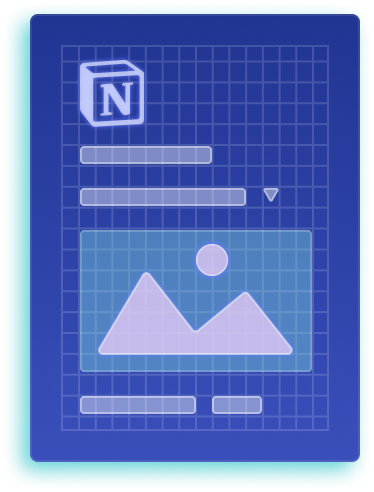.png)
Webflow vs Hubspot: An Expert’s Deep Dive (2025)
Hubspot may not be Webflow’s direct competitor or a classic web builder, but that hasn’t stopped people from comparing the two. Moreover, Hubspot, the leading customer relationship management (CRM) tool on the market, is a bigger tool than Webflow in the sense that it’s a suite of apps, where a drag-and-drop builder for website creation is just one of them.
On the other hand, Webflow is predominantly used for designing and managing a site, improving your SEO, and taking care of your site’s hosting needs. Its design tool is like no other, but we can still compare it with a simpler one like Hubspot’s, especially when considering other features and tools the brand covers.
Being a Webflow expert, this is precisely why I wanted to make a Webflow vs Hubspot comparison. In this detailed guide, I’ll focus on analyzing and comparing the following aspects of the duo:
- Target users
- Ease of use and interface
- CMS features
- Pricing and plans
- Available tools
- Available templates
- SEO tools
- Resources for beginners
- Use of AI
So, let’s start from the beginning.
{{cta}}
Webflow vs Hubspot: A Quick Comparison
First things first, we need to make a brief overview of where the two are similar or different:
- Webflow is a website experience platform that offers a comprehensive set of tools for creating, managing, and editing a site, while Hubspot is a CRM suite of apps where a website builder is just one part of a much bigger picture.
- The two cooperate to a degree, and it’s common for people to use Webflow to build a site and then integrate it with Hubspot for customer relationship needs.
- Based on data from buildwith.com, 1+ million websites are Webflow customers, while 1.5+ million use one or more of the services Hubspot offers.
- Webflow is primarily used to create and run highly customized websites, while Hubspot is utilized mainly as an all-in-one marketing and CMR tool. However, many people use both by creating and managing their website with Webflow and embedding Hubspot tracking and forms because they rarely find a better set of CRM features than with Hubspot.
- Webflow offers a free plan, as well as four general and three ecommerce plans. Hubspot also has a free plan and four paid ones that cover its entire suite of apps, two of which are for businesses and enterprises and two for small companies and entrepreneurs. Hubspot has almost the same pricing structure for its different app sets, allowing you to get only one set (called Hub). You can also bundle different Hubs or tools.
- Both brands offer CMS and SEO tools, while Webflow has a more robust template library. Hubspot’s templates are focused more on marketing.
- Both brands offer an extensive range of resources for beginners. Webflow has its University with tutorials and video courses, and Hubspot has its Academy, which features many courses and certifications.
Who Should Use Webflow?
- Marketing teams and content creators: Webflow features a strong CMS, allowing marketing teams to streamline all of their marketing strategies while fully controlling their website. Moreover, they don’t need much technical knowledge to edit content.
- Web designers who want the best: Designers get a fully flexible tool that allows them to visually create stunning websites without focusing on code. Its massive array of animations, interactions, and integrations make it easy to create custom sites.
- Various freelancers and agencies: Webflow streamlines the web development process, making it easier to create sites, and it has more than enough collaboration features. Plus, it’s helpful with rapid prototyping, so you can present ideas to clients.
- Businesses of all sizes: Even though it’s focused on design, Webflow is an all-in-one solution, meaning it supports the whole website development lifecycle.
- Startups and entrepreneurs: If you need both a visually stunning website and a high-performing one, Webflow is perfect. It’s flexible with design and has excellent backend capabilities.
Who Should Use Hubspot?
- Small and mid-sized businesses looking for an all-in-one CRM solution: Hubspot’s website builder makes it easy to create a simple website, which you can easily integrate with the rest of Hubspot tools. More than that, if you don’t have a dedicated web development team, Hubspot’s web builder can be very useful due to its simplicity.
- Marketing teams already using Hubspot: The brand's web builder tool will be very useful for marketing teams that already use Hubspot for their CRM needs or marketing automation.
- Businesses that prioritize inbound marketing: Hubspot is created around inbound marketing ideas, so you can easily use the brand’s web builder to support such strategies.
- Non-technical users: Hubspot web builder is a simple drag-and-drop tool with strong AI-powered features, so it’s pretty easy for those with limited coding knowledge to use.
Interface Overview and Ease of Use
Hubspot web builder is a simple drag-and-drop editor that lets you visually construct web pages with ease. You can move images, forms, text boxes, and calls to action. More than that, you get a real-time preview of your website while creating it.
You get various pre-built themes and templates to create a professional-looking site. You can also customize these templates.
Hubspot also features a CMS fully integrated with its web builder, which should make content management easier. SEO tools are also a big part of what Hubspot does, so you’ll have an easier time optimizing your website through Hubspot.
Webflow’s interface is a lot more complex as it offers many more functionalities, letting you truly fine-tune a website. It’s focused on visual design, and you can edit your site at the pixel level, showing how detail-focused this tool is.
Naturally, this makes Webflow much more complex than Hubspot and thus harder to use, so the learning curve is definitely higher.
The good news is that it’s not impossible to learn how to use Webflow, it’s just that it’s harder than Hubspot builder. However, the results are hard to compare because it’s impossible to make a fully customized website that looks and functions perfectly with Hubspot as you can with Webflow.
On top of that, you get a lot more templates and themes on Webflow, making it easier to create a unique and more personalized website that fully suits your brand.
Webflow vs Hubspot — CMS Capabilities
Webflow’s CMS is deeply integrated with the rest of Webflow, which lets you create highly customized content, making it ideal for any business or individual who needs lots of visually rich content.
You get a lot of flexibility in creating custom content structures and types so you can easily deal with very complex content needs. For instance, you can create blogs, portfolios, complex case studies, and programmatic landing pages, among many other types of content.
Webflow is thus clearly concentrated on design while also being a great marketing hub, while Hubspot has a fully marketing-centered focus. Its CMS is tightly integrated with Hubspot’s CRM, marketing automation, and sales features.
You get to create fully optimized content for lead generation and conversions. However, this comes at the cost of the customization options Webflow offers. Hubspot’s goal here is to make content management easier, not to make highly customized content.
Webflow and Hubspot Pricing Plans
The first thing you need to understand about pricing between the two is that they use different systems:
- Webflow is an all-in-one website experience platform, so it comes with different plans that delve into how detailed the service you get is. However, they all focus on web design, website hosting, and CMS, the primary services Webflow offers.
- Hubspot has several tools called Hubs, meaning it has separate pricing for each, while you can also pay for the whole suite of apps. There’s a Marketing, Sales, Service, Content, Operations, and a Commerce Hub. Whether you choose a separate Hub or the whole platform, you’ll get different business/enterprise plans and individual/small team plans.
- Both can be free to use. Webflow has a free plan, while Hubspot’s web builder and CMS are free. As you can expect, both brands’ services are pretty limited when used for free, and you’ll have to have their branding on your website if you’re unwilling to pay for a specific plan.
Due to this difference, it’s impossible to accurately compare the pricing of the two because you might want to use more than one service if you opt for Hubspot. I can’t make side-by-side comparisons of the price as I usually do, but I can break down the main plans of both, together with the primary benefits they offer. That way, you’ll have the details you need to make a more informed choice.
Webflow Pricing
Once you check the pricing of Webflow, you’ll quickly see that there are two groups called Sites and Workspaces. I’ll cover the former, as it’s made for building, publishing, and hosting with ease, while the latter is for teams and multiple sites. You can check out the detailed breakdown of all Webflow packages here.
The Sites plans are further separated into General and Ecommerce, and the former cover the following:
- Starter (for people getting started with Webflow)
- Free
- Webflow domain
- 2 pages
- 20 CMS collections
- 50 CMS items
- 1 GB bandwidth for hosting
- Basic (for simple and static sites)
- $18/month ($14/month if billed annually)
- Custom domain
- 150 pages
- 0 CMS collections and items
- 10 GB bandwidth for hosting with surge protection
- CMS (for blogs and other content-based sites)
- $29/month ($23/month if billed annually)
- Custom domain
- 150 pages
- 20 CMS collections
- 2,000 CMS items
- 50 GB bandwidth for hosting with surge protection
- 3 legacy Editor users
- Site search
- Business (for bigger sites requiring flexibility)
- $49/month ($39/month if billed annually)
- Custom domain
- 300 pages
- 40 CMS collections
- 10,000 CMS items (you can add more for a price)
- 100 GB bandwidth for hosting with surge protection (you can add more for a price)
- 10 legacy Editor users
- Site search
- Form file upload
There’s also a highly customized Enterprise plan where the price is negotiable.
Hubspot Pricing
It would take too much space to cover the pricing of all Hubs Hubspot offers, so you’ll have to look at that directly on Hubspot’s site. However, I can still show you the Content Hub's plans, which are the most important for our needs here. Here’s the breakdown:
- Free Tools (for starting content marketing and launching a site)
- Free (for up to 2 users)
- Hubspot branding
- Drag and drop editor
- Up to 30 pages
- Up to 30 landing pages
- Content Hub Starter (essential content marketing tools for kickstarting a content strategy)
- $20/month/seat ($15 if paid annually)
- Drag and drop editor
- Up to 30 pages
- Up to 30 landing pages
- Custom templates
- Starter Customer Platform (essential marketing, sales, service, content, and operations software)
- $20/month/seat ($15 if paid annually)
- Content Hub Starter
- Marketing Hub Starter
- Sales Hub Starter
- Service Hub Starter
- Operations Hub Starter
- Content Hub Professional (comprehensive content marketing software for leveraging and scaling)
- $500/month for 3 seats (every new seat is an added $50)
- $450/month for 3 seats (every new seat is an added $45)
- Drag and drop editor
- Up to 10,000 pages
- Up to 10,000 landing pages
- Custom templates
- Smart content for personalization
- A/B and adaptive testing
- SEO recommendations
Available Tools
Webflow’s main tools are the Webflow Designer and Webflow Editor.
- Webflow Designer is the primary tool used to create the site's overall design with the code, logic, and animations. You can also add CMS items and collections here.
- Webflow Editor is the tool you access directly on your live website. This is where you can edit content on the site and access your CMS items or add new ones. Bear in mind, though, that this is effectively a legacy tool because Webflow plans to incorporate it into Designer to create an all-in-one tool.
On the other hand, Hubspot features a simple drag-and-drop editor primarily made for basic but professional-looking websites that almost anyone can build.
However, this is Hubspot’s free tool, and to get the full capabilities, you need the Content Hub, which used to be called the CMS Hub. Through it, you’ll get all the features you need for content management, including those for creating and managing a site, its pages, blog posts, landing pages, and various other pieces of content.
Unfortunately, none of this makes website creation better with Hubspot. Webflow simply has more features that go into much greater detail so you can tamper with every element of your website and every pixel of the visuals.
Webflow vs Hubspot — Templates
Webflow has a massive selection of templates in its templates library. You’ll find over 2,000 templates, most of which you can fully customize. Some are free, while some are paid, and the paid ones have varied prices that typically range from $49 to $129.
Hubspot has a much lower number of templates, but they can also be either free or paid. Unlike Webflow’s, that offer design flexibility and can be visually customized, Hubspot templates are more geared toward high marketing functionality and, as with everything else, full integration with the rest of Hubspot’s tools.
SEO Tools on Webflow and Hubspot
I haven’t talked about that much, but Webflow has a good deal of SEO tools and is actually great for SEO needs, surpassing the capabilities Hubspot offers.
You can easily make a 301 redirect, customize the robots.txt file, and let Webflow automatically generate a sitemap.xml file.
On a less technical side, you can create custom meta titles and descriptions, custom URLs, optimize images by adding text or compressing them to improve your page load speed, and much more.
Hubspot also has a robust set of SEO tools that integrate into its platform, and they are made to be easy to use, even for beginners. You get all the essentials you need, and even analytics and reporting. However, they are not as broad as the tools Webflow offers. The SEO capabilities of Hubspot are better only if you are a heavy Hubspot user who takes advantage of other features the brand offers.
This is mainly because Hubspot SEO features are integrated with its CRM, which helps you with more personalized content delivery. This will inadvertently improve your SEO efforts because it leads to better user engagement, which lies at the core of what Hubspot does.
Resources for Learning Webflow or Hubspot
The two brands are juggernauts in the digital realm and highly reputable, so it stands to reason that they both have their own knowledge bases — Webflow University and Hubspot Academy.
Webflow University offers free courses for beginners and those with more extensive knowledge. The courses often have videos, while the University holds many video-based single lessons for specific parts of Webflow.
Moreover, Webflow also has games that make learning easier and tests that help you determine the exact level of your knowledge and even award certifications.
Webflow has also amassed a large community worldwide. You can also get involved by attending a webinar, visiting a conference, or simply joining the Webflow Community.
You should also check the Made in Webflow section, where you can find various Webflow sites whose designs you can effectively clone into Webflow Designer to use as templates.
There’s even a Glossary page where you can find explanations for countless terms used in web design and web development, so if you’re unfamiliar with one spoken in the lessons or by the community, Webflow has you covered.
As for Hubspot Academy, it offers numerous courses and certifications on hundreds of topics. All are free and typically contain professionally made videos. There’s a separate Resources page where hundreds of e-books, templates, and guides can help you learn more about Hubspot.
Hubspot also features its own Community like Webflow, which can help you connect to other users and increase your knowledge of everything the brand offers.
Hubspot has a few partnership programs that might be useful to you, like the HubSpot Education Partner Program that has brought together over 1555 universities and colleges.
Webflow vs Hubspot — AI Capabilities
Webflow has relatively recently started introducing AI features into its platform, while Hubspot has had them for a while.
Webflow prominently features its AI Assistant, which can help you while you build, providing answers to questions you get in the moment and offering help that fits your situation. Webflow’s AI capabilities enable you to create a site, modify page designs, generate content, and more. You can even localize your site through AI-powered translations.
The Optimize feature is also interesting because it uses AI to power Webflow’s A/B testing. This helps you find the best-performing variations of your site, which are bound to increase conversions.
Other than that, Webflow is actively working on new AI features, like the ones that will help you with SEO optimization by completing tasks like image alt tag generation.
Hubspot has an AI copilot called Breeze, which runs through the entire platform. It’s also an assistant and can help you with almost any task you can perform on Hubspot.
You can generate content like a marketing copy, a social media post, or even a whole blog post. You can also optimize your SEO and get help with the Hubspot’s CRM platform. For instance, Hubspot’s AI tools can help you gain insights into customer behavior, which will be invaluable to the sales team.
Hubspot’s web builder is also powered by AI, making web development easier and faster, automating much of the process and even creating entire websites for you.
{{cta}}
Webflow vs Hubspot — Which One Is Better?
Webflow and Hubspot are technically two different tools, but Hubspot also deals with website creation and management like Webflow, even though it’s only one side of the larger picture.
As you’ve seen, Webflow excels at visual design and customized solutions. It lets you create professional, visually stunning, and unique websites by allowing you to tamper with every single detail.
Hubspot has a valuable and easy-to-use web builder with a standard drag-and-drop interface. It’s not nearly as good as Webflow, but it shines more brightly once you account for the rest of the platform's content marketing capabilities.
In essence, Webflow is better, as Hubspot is not a real competitor, which is why the two work best in conjunction. Webflow is best for creating and managing a website and handling its SEO needs, while Hubspot is for everything CRM-related.
The best part is that you can fully integrate Hubspot with Webflow, and Flow Ninja can help you with that. Take a closer look at how Webflow Hubspot integration works and contact us to learn how we can help you complete this integration successfully.





The 2025 Marketer’s Guide to CMS
Check out our comprehensive whitepaper covering the best CMS options for marketers who aim to scale their content operations.
.png)

.png)

in mind?
Talk with our team and learn how your ideas can become digital experiences.
.png)
.svg)





.webp)










-min.png)








.svg)

.png)
.png)
.webp)
.svg)


